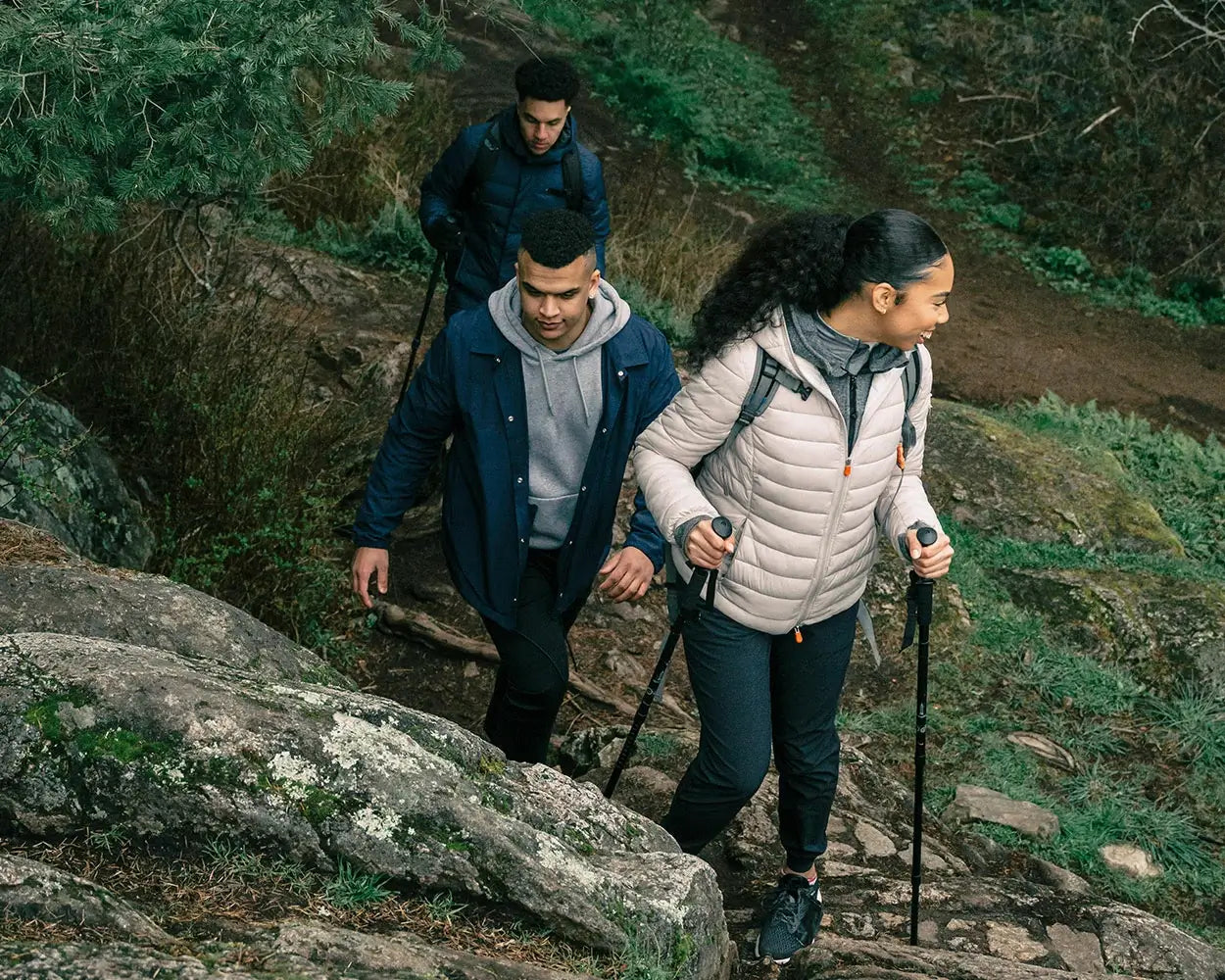A lone hiker stands on a grassy ridge, gazing at the jagged Seceda peaks of the Dolomites. These Italian Alps are literally Alpi Giulie and Dolomiti – “pale mountains” named for the rose-tinged limestone that glows at sunrise. The range stretches across roughly 15,500 km² (about 6,000 square miles) of northeastern Italy, encompassing Alto Adige/Südtirol to Trentino. Its scale is staggering: UNESCO protects about 1,419 km² of the highest summits (18 peaks over 3,000 m). Even UNESCO calls them “some of the most beautiful mountain landscapes anywhere, with vertical walls, sheer cliffs and a high density of narrow, deep and long valleys.” In short, the Dolomites are a masterpiece of rock and light, yet by some strange quirk many hikers overlook this alpine cathedral.

The Pale Majesty of the Dolomites
Geologically speaking, the Dolomites are a time capsule. About 30 million years ago the collision of the African and European plates thrust these reefs‑turned‑rock into the sky. Every ridge and spire bears fossils and sea‑bed sediments from the Triassic seas, a legacy that gives the mountains their light color. Today four UNESCO sub-ranges in South Tyrol – the Three Peaks (Tre Cime), Fanes-Sennes-Braies, Sciliar-Rosengarten and Puez-Odle parks – showcase this geologyWhen you hike here you’re literally walking on the history of the earth. But beyond rocks, the drama of weather writes the story each day: avalanches and landslides are frequent in winter, while summer storms can build in minutes. Forecasters advise checking conditions carefully, since “mountain weather can be unpredictable and change quickly.” In return, hikers are rewarded with eerie silence broken only by chamois calls and echoing cowbells, and the surreal sight of limestone towers glowing pink and orange at dusk.
A Tapestry of Culture and History
The Dolomites are as much cultural as geographical: a melting pot of Italian, German and Ladin (Rhaeto-Romance) heritage. Until 1919 this region was part of the Austro-Hungarian Tyrol, and echoes of that past live on in alpine customs and cuisine. You’ll find Austrian-style speck (smoked ham), hearty dumplings (canederli), creamy polenta and even fine apple strudels at mountain lodges. Local people proudly speak German in South Tyrol and Italian further south, while the remote valleys still cherish the ancient Ladin tongue. In quiet villages you might hear tambourine music at a Sagre festival or see pasture shepherds in felt hats – traditions held for centuries. The mountains themselves carry memory: crumbling WWI trenches and open-air museums near Lagazuoi and Tre Cime remind us of battles fought here. But today war is only among the wildflowers – the villages welcome visitors with warm hospitality. In fact, “Welcoming mountain refuges and innkeepers serve South Tyrolean food” in cozy huts (rifugi) like the Schlernhaus or Dreizinnenhütte. Sharing apple strudel on a balcony against a mountain backdrop is a cultural feast as much as it is a meal.

Trails, Peaks, and Alpine Lakes
The hiking here is simply extraordinary. As one guide puts it, the Dolomites are “a paradise for outdoor enthusiasts”. There are trails for every taste – from gentle forest walks to ragged via ferrata climbs. Picture trekking through fragrant larch woods and wildflower meadows (Alpe di Siusi’s pastures are legendary), then ascending to razorback ridges of dolomite and charcoal. You might row across the emerald Lago di Braies or have its glassy steppes mirror the sky (left image). Or stand above the Three Peaks (Drei Zinnen) at sunrise – an almost religious spectacle of color. In South Tyrol alone UNESCO highlights parks like Tre Cime, Fanes-Senes-Braies, Sciliar-Rosengarten and Puez-Odle as must-hike areas. These high trails reveal “diverse terrains, from lush forests and alpine meadows… to rugged peaks and crystal-clear lakes like Lago di Braies”. Thrill-seekers will tackle famous via ferratas (iron ladders bolted onto rock) or long alpine treks such as the Alta Via routes. Whether you’re a family day-walker or an ultra-runner, there’s something here for everyone and every level of adventurer.

The emerald waters of Lago di Braies (Pragser Wildsee) mirror the surrounding larches and dolomite pinnacles. This idyllic lake is one of the “crystal-clear lakes” hikers rave about, and a very popular photo stop on gentle loop trails. Higher up, classic summits like Marmolada (3,343m) and Monte Pelmo beckon, and nearly every valley has its star hike. Good trailheads and well-marked paths mean even beginners can explore safely. Thanks to a dense network of rifugi (mountain huts), you can do multi-day hikes without heavy loads – just daypacks stuffed with the night’s laundry. (Pro tip: a modest travel backpack works, as you’ll often stay in huts.) Trail maps are easy to find at local stores, and rangers or hotel hosts can advise on current conditions.

Planning Your Dolomite Adventure
Getting here and getting around is straightforward. International visitors usually fly into Venice, Innsbruck or Munich, then rent a car or catch a train to the mountains. The region is driving-friendly and well-signed, though in high summer many drive up mountain passes (Passo Gardena, Falzarego, etc.) to start hikes. In winter it’s a ski mecca (Dolomiti Superski is huge), but from June to September the trails are largely snow-free. Peak hiking season is mid-June through early October, when most huts and lifts are open. Even in high summer, be prepared for rapid weather changes: layers and waterproofs are a must. Experts recommend packing “sturdy hiking boots, a detailed map or GPS, sufficient water and snacks, [and] a first-aid kit”. In practice, a good pair of boots, sunscreen and a few energy bars make for happy days on the trail. Because mountain sun is strong and oxygen thin, start early and schedule acclimatization days if you plan big gains. At night, cozy lodges serve local meals and comfortable beds, so you needn’t carry camping gear – just book well ahead in summer.
News and Trends: The Dolomites in the Spotlight
Lately the Dolomites have been emerging from under the radar, even grabbing headlines and travel charts. In spring 2024 Italian media celebrated the opening of the Cammino Retico, a new 170-km loop connecting seven villages in Belluno province. Organized by locals, this trail aims to spur “slow and sustainable tourism” in areas where tourism had faded – perfect for hikers who want uncrowded, authentic paths. On social media and trend forecasts, the buzz is growing too: Pinterest’s 2025 travel report predicted a 45% surge in searches for the Dolomites as more Gen Z and Millennials seek high-altitude, nature‑immersive trips. (Even luxury travel outlets are touting new Dolomite resorts – there’s a Forbes article calling it “on top of the world” for 2024.)
That said, these mountains have also seen sobering stories. In July 2022, an unusually warm spell triggered an ice collapse on the Marmolada glacier (the “Queen of the Dolomites”), tragically killing 11 hikers. Scientists are now sounding alarms: the Marmolada glacier is shrinking fast and “could melt away completely by as early as 2040”. This stark news underscores a reality of Dolomite travel: the landscapes are wild and changing. Safety matters. (A reminder: in March 2025 a routine cable-car inspection turned eventful when a tram crashed at the Arabba/Marmolada station, injuring one technician. Though it happened after hours and no tourists were hurt, it showed how vigilant operators must be.) In short, modern developments have shined a light on this region – but for now the Dolomites remain refreshingly laid-back compared to overcrowded Alps trails.
Embracing the Dolomites with Heart
All this adds up to one thing: the Dolomites are a treasure waiting to be claimed. Maybe they’re Europe’s most underrated paradise simply because they excel at surprise – every turn reveals something new: a hidden lake, a 360° vista, a hut roast dinner. Rich Alpine culture and tranquility mingle here, unspoiled by tourist hordes. You can summit at dawn, return to a solo cup of espresso on a terrace, and end the day with local speck and polenta as the peaks turn violet. For travelers from North America or elsewhere in Europe, this is a chance to hike where the air is old and stories run deep – without the crowds of the Matterhorn or Mont Blanc.
So lace up your boots and load that travel backpack: the Dolomites are calling. Hike a few hours and you’ll feel as if you’ve stepped onto another planet – one shaped by oceans and stones and time. Let the mountains humble you with their scale and color, let the Tyrolean welcome warm you like good madeira. And perhaps you’ll come home spreading the word: Europe’s best-secret hiking paradise has at last revealed itself, and it’s as sublime as you dared to dream.






Share:
Crafting Your Conscious Journey: Where Slow Travel Meets the Perfect Pack
Why Solo Hiking Is the New Frontier of Wellness Retreats